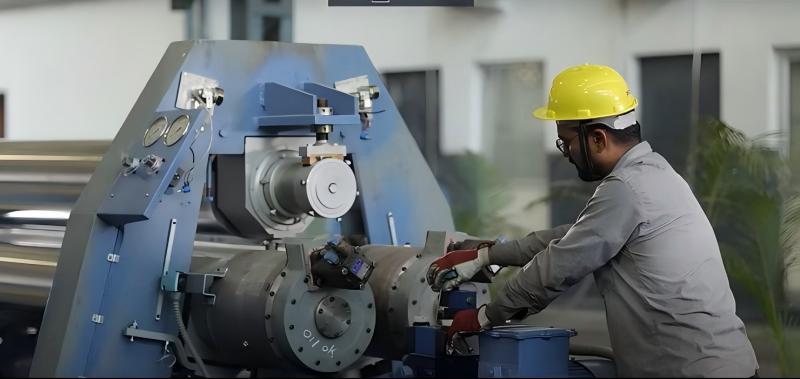Documentation Hub
Comprehensive technical manuals and guides to help you master HARSLE machines and optimize your metalworking efficiency
Rolling Machine Efficiency: How to Lower Costs?
Rolling Machine Efficiency is the first topic that surfaces whenever I sit down with fabrication managers—they all want to know how to keep their rolling lines humming without letting operating costs skyrocket. By refining setup routines, investing in smart control systems, and following a disciplined maintenance schedule, I consistently shorten cycle times, extend tooling life, and squeeze more profit from every sheet that moves through the rolls. In this guide, I’ll share proven, shop-floor strategies that cut your cost per part while protecting quality, whether you run a 3-roll, 4-roll, or variable-geometry machine.
What Drives Rolling Machine Efficiency in Modern Shops?

Material-Handling Automation Improves Throughput
Automated loading tables, side supports, and out-feed arms reduce manual intervention, a major hidden cost. Adding even a basic hydraulic side support can cut cycle times by 10–15 % for large diameters.
Precision CNC Control Systems Slash Rework

Upgrading to a CNC with multi-axis compensation keeps the crown of each roll perfectly aligned, delivering ±0.25 mm repeatability. The result: fewer corrective passes, less scrap, and tighter control of rolling machine efficiency benchmarks.
Energy-Saving Drive Technologies Cut Utility Bills
Look for inverter-controlled main drives or hybrid servo-hydraulic systems. Compared with legacy hydraulic circuits, these drives can drop energy consumption by 20–30 %, especially during idle or low-load phases.
Step-by-Step Setup to Maximize Throughput
Step 1: Prepare the Work Area and Level the Machine

Before I power up, I clear debris, verify floor level, and confirm anchor bolts are torqued. A perfectly leveled frame prevents taper defects and preserves roll bearings.
Step 2: Optimize Roll Geometry for Material Thickness
Using the manufacturer’s chart, I set the lower rolls to achieve the ideal crowning curve for today’s plate thickness. For cone jobs, I offset one end by 5–7 mm to keep the seam straight.
Step 3: Calibrate the CNC Controls for Repeatability
I run a quick “cold-roll” test pass, measure diameters with digital calipers, and input the correction factors into the CNC. This long-tail task—how to calibrate a rolling machine CNC controller—pays off by eliminating guesswork on the first production part.
Step 4: Program Batch Sequences
When orders share the same diameter, I nest them as a single batch. The CNC’s auto-repeat removes idle jogs, boosting effective speed by up to 12 %.
Cost-Reduction Strategies Throughout the Machine Lifecycle
Calculate the True Cost per Part
I track power, labor, wear parts, and consumables in a spreadsheet. Dividing by the annual output shows my real operating cost—data I use to justify upgrades that lift Rolling Machine Efficiency.
Schedule Predictive Maintenance to Avoid Downtime

Oil analysis and vibration sensors flag bearing wear weeks before failure. Swapping bearings during a planned stop is far cheaper than losing a full shift to an unexpected breakdown.
Retrofit vs Replace: When to Upgrade Components
Servo retrofit kits, modern safety curtains, or a new control package usually cost 30–40 % of a new machine but deliver 70 % of the productivity gain. I compare ROI over five years and pick the option with the lowest cost per rolled ton.
Common Troubleshooting Tips for Maintaining Efficiency

Addressing Material Slippage
If the plate stalls, I inspect for oil on the rolls, check roll pressure settings, and verify the material’s surface roughness. Rough-grit shot blasting often restores grip without raising pressure (and wear).
Correcting Cone Deformation
Uneven diameters along the cylinder mean one roll is creeping out of parallel. I realign the end frames within ±0.05 mm using feeler gauges and torque the tie rods to spec.
Balancing Roll Wear
Rather than grinding only the high-wear top roll, I rotate all three or four rolls on a fixed schedule. Balanced wear keeps the neutral axis centered and maintains rolling machine efficiency across batches.
FAQ
What plate thickness limits Rolling Machine Efficiency most?
Once you exceed roughly 55 % of the machine’s rated capacity, roll deformation rises sharply. Efficiency drops because you need multiple passes. Staying within 80–90 % of capacity maximizes single-pass success.
How often should I calibrate the CNC on a plate roller?
For high-volume shops, I recommend a full calibration every 160 production hours—or immediately after any major collision or roll change—to keep tolerances tight.
Does upgrading to a servo-hydraulic drive always save money?
If your duty cycle includes long idle periods or frequent diameter changes, yes—the energy savings and faster acceleration pay back in 12–18 months. Continuous heavy rolling may show a longer ROI.
What’s the quickest way to reduce scrap on large-diameter jobs?
Implement a laser diameter measuring system in-line with the out-feed; it alerts me before the seam closes, allowing on-the-fly correction instead of scrapping a full cylinder.
Conclusion
Boosting Rolling Machine Efficiency isn’t a single upgrade—it’s a mindset. By streamlining setup, leveraging CNC precision, adopting energy-saving drives, and sticking to predictive maintenance, I consistently lower my cost per part and meet tight delivery windows. Ready to push your own efficiency higher? Contact the HARSLE engineering team for a tailored audit, or explore our knowledge base for deeper tutorials.













